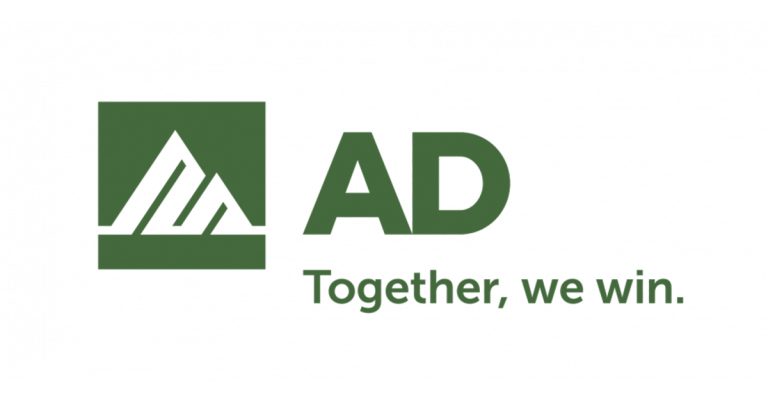HR Transformation and the Digital Distributor

December 18, 2018
We are in the era of digital business transformation, and there is no going back. Disruption brings business opportunities, and your ability to maximize your pursuit of these opportunities requires a workforce that is not only engaged — feeling supported, trained, rewarded, and motivated — but “all in”: invested, doing work they love, and knowing they are contributing to more than their individual experience. All-in employees do what it takes to win, for themselves and for your organization.
HR is successful when all employees are successful, contributing to the business and developing their skills for the future. Yet everything about work, the workforce, and the workplace has changed. Today’s workforce in the wholesale distribution industry is more diverse than ever, and increasingly composed of contingent labour. Rethinking what’s needed to create an “all-in” workforce requires moving beyond traditional HR strategies and technology and focusing on how people live, work, and build relationships with employers and each other.
Defining digital transformation
While digital transformation has become a hot topic today, many will remember that it has been a hot topic before. But this time, there’s a difference.
In the past, the transformation was simply keeping up with technology trends that would help you to improve efficiency, to continue doing what you do, only doing it better. Today, the transformation is more pronounced. Rather than just doing the same things better, it is about being more effective: doing new things, in new ways, to create new processes and new business opportunities.
Digital transformation is the evolutionary step of using technology to bring together your entire eco- system of employees, contingent workers, suppliers, partners, and customers in real time. This opens up new, more immediate opportunities to understand what is happening in and around your business, and to respond not just reactively, but in a proactive, even predictive manner.
The table below captures a few of the potential impacts of transformation.
[PLEASE INSERT CEW-24-SAP-table.png HERE]
Why digital transformation matters
You’ve probably heard about, or experienced, how some companies have gone beyond “improvement” to literally transform their industries. The availability of cloud-based capabilities, with the total reach of the Internet and Internet of Things (IoT), coupled with mobile devices, has changed the way people think and act. Among the most dramatic examples are Uber Technologies Inc. and Airbnb, both of which have changed — globally — the way people book car rides and guest accommodations.
What does digital transformation mean for HR leaders? What kinds of strategies will HR need to rethink to ensure the organization is ready? Where will you find your talent pool to ensure future bench strength? How can you respond faster to the increasing needs of the business, such as increasing simplicity and agility? Do you have the data and insight to make decisions with confidence? And, do you have the technology to ensure you can keep pace with the ever-changing needs all around?
In a May 2016 study by Oxford Economics and SAP, we defined digital leaders (DLs) as those who, whether individuals or organizations, have been the “all in” adopters of digital transformation strategies and have the most to show for it. The study notes that DLs outperform their peers in terms of financial performance, employee engagement and satisfaction, management capabilities, and more mature, progressive HR practices.
- DLs are more likely to be top financial performers, showing both revenue and profitability growth over the past three years.
- They rate skills among management –both midlevel and senior – more highly across a broad range of areas. They are more likely to value approachability and openness to new ideas from others, and nearly twice as likely to rate collaboration and innovation skills as priorities.
- They recognize the value of diversity and take steps to increase it. They are more likely to have seen growth in diversity among the general workforce and middle management over the past three years, and report positive impact on culture and financial performance.
- They are almost twice as likely to provide up-to-date technology to their employees, and do more to continually develop employee skills.
- They are more likely to offer the benefits that matter most to their employees, and more likely to support open communication between executives and employees.
- DLs are more likely to make data-driven decisions in real time.
DLs have more mature strategies for recruitment, leadership and talent development, and succession planning — and are reaping rewards in terms of financial performance, employee engagement, and organizational culture.
All of these findings demonstrate that HR leaders working closely with IT and business unit leaders have a unique opportunity to provide digital trans- formation leadership and support across all aspects of the business.
Digital transformation requires a highly engaged, multigenerational workforce. Engaged employees do what it takes to win for themselves and for your organization.
HCM technical prerequisites for transformation
CLOUD DELIVERY
Leveraging the cloud for your HCM software systems provides two key benefits to help you address the ever-increasing pace of technological and business change.
- Increased standardization: with cloud-based software, the ability for unlimited customization does not exist, as was the case with typical on-premise deployments. Using a more standard approach to HR processes helps drive a simpler and faster implementation. This simplicity, in turn, can enable a much faster response to changes in business and related strategies. No longer does it take months to analyze the impact of these changes, and then many more months to implement, test, and roll them out. Months become weeks, and the overall business benefits form the ability to respond with much greater agility.
- Increased access to innovation: with cloud-based solutions, your vendor updates the technology and applications on a regular basis (with SAP SuccessFactors solutions, this happens every quarter). Organizations using cloud solutions no longer need to wait for IT departments to upgrade on-premise software. HR can leverage new functions and approaches faster, so the entire organization can more quickly embrace new HR processes and business strategies.
But digital transformation goes beyond just cloud delivery. The technology itself must encompass new digital concepts to achieve your true digital transformation. Too often, employees take a step back — or 10 steps back — when they use business software, compared to the consumer software they use on a daily basis. This is a particular concern to the Millennials in your workforce. To engage employees fully and get the most value from your HCM technology, new and modern approaches are required.
CONTINUOUS
To get full value from any business software, it must be used on an ongoing basis. HCM solutions are no exception. However, too often people use them only when they have to. For example, viewing pay stubs on a pay-period basis, entering objectives on an annual basis, or changing an address every few years. In order to achieve the “all in” effect, HR technology must enable employees every day. It must be seen as helpful and the place to go for answers, rather than as software to be avoided, with logons only occasional and obligatory. New functions must include:
- mobile access to processes when it’s convenient for the employee, which does not require being at a desk
- a consumer-grade user experience
- application features that encourage ongoing use; for example, activity and achievement tracking linked to individual goals, ongoing access to learning to ensure skills are kept up-to-date, and ongoing mentorship and check-ins to help develop careers.
INTELLIGENT
A key benefit of a software implementation is process automation, which reduces the time it takes to complete processes and increases efficiency. Yet, an often overlooked benefit of transformation with cloud-based solutions is data collection and the ability to use those data effectively. Traditionally, we’ve confined data use to reporting and, in some cases, analytics. But today’s Big Data technology must go much further.
- Embedded guidance: the technology must support immediate decision making by embedding relevant content and guidance directly into the process.
- Recommendations: the technology must be able to analyze current situations and available data in real time and transform that information into recommendations to the user. For example, an employee accessing a learning portal is likely to be presented with hundreds, if not thousands, of available courses. The technology can analyze the current employee profile and the experiences of other similar employees in real time, and make recommendations about which learning options could be best for that individual — at that specific time and in that specific situation.
- Predictions, prescriptions, and planning: workforce analytics can provide significant insight into current operations and strategy measurements. But the metrics are typically lagging, identifying problems that have already occurred. Today, technology must be able to not only measure the past, but also to predict the future and what could happen given historical trends, future strategies, and external data. Yet prediction alone is not sufficient; the ability to suggest an appropriate response to the future trend and the implementation of an executable plan is also required.
EXTENSIBLE
As stated earlier, a key benefit of the cloud is the ability to drive — even enforce — HR process standardization. But HR processes, like most business processes, are never “one size fits all.” Uniqueness is both desired, helping to position the organization as an employer of choice, and mandated, based on company-specific policies and employee agreements. But the fast pace of change also plays a role.
There are hundreds of HCM technology start-ups, enabled by ubiquitous cloud software systems and delivered over the Internet, all supplying new innovations and features that help take digital trans- formation to the next level. Today’s technology recognizes that there is no such thing as a “single platform” or “100% organic development” when it comes to HCM technology deployment. The ability to incorporate new ideas and innovations for digital transformation easily is mandatory in order to realize the transformation. Enter the platform-as-a-service (PaaS) model, which helps drive uniqueness and an ecosystem of innovation.
- Company-specific processes: with a connected PaaS, HR has the ability to create unique processes that are desirable or required. This is especially important as companies migrate their on-premise environments to the cloud, as they can use the PaaS to recreate necessary on-premise processes and still achieve the benefits of process standardization.
- Partner-supplied innovations: a comprehensive PaaS must actively encourage the participation of third-party software companies to innovate on it, offering seamless connections to the HCM software and easy deployment by organizations wanting to leverage these innovations. A comparison can be made to mobile device platforms.
The overall value of a typical mobile device is the combination of vendor-supplied apps, as well as the thousands of apps in an app store. This concept can be applied to HCM technology as well: a vendor can supply a set of core processes, supplemented with third-party apps easily accessible through an enterprise store.
- Integration services: HR software systems are not islands; employee and organizational data maintained in them are used throughout other enterprise software and across multiple service providers. A PaaS must provide a robust set of integration services and middleware to enable organizations to move these data easily and securely as necessary.
Five key ways to drive transformation
The challenge for HR is to transform strategy into business results by enabling people’s success. The only way HR is going to succeed is to leverage digital technology to simplify and innovate.
Along those lines, according to Mike Ettling, President of SAP SuccessFactors, the future of HR is no HR. What this means is that HR’s best strategy is to simplify and streamline support for your organization’s people and business so completely that the HR function becomes transparent. In this way, HR transforms itself from a perceived complication to a seamless enabler of the business.
To achieve this transformation, best-practice leaders are currently focusing on new strategies that rely on modern technology to drive continuous usage with every employee:
- ENGAGE EMPLOYEES
“All-in” employees are more productive, profitable, customer-focused, and likely to stay with an organization, yet studies show that 66% of today’s work- force is not highly engaged. Strategies that can help maximize employee engagement include:
- Make sure the right people are in the right roles equipped with the right capabilities
- Provide your employees with a path and a perspective
- Identify and develop next-generation talent
- Create a context within which employees collaborate, connect, and share best practices and ideas
- Provide easy access to software from anywhere, on any device, with a consumer-grade user experience
- PROMOTE A LEARNING CULTURE AND DRIVE INNOVATION
Recent research conducted by SuccessFactors and Oxford Economics with 2,700 employees shows that only 34% of them say that their company is able to give them the training they need.
In order to build a true learning culture:
- Create a culture of continual learning and collaboration
- Move away from traditional employee training, and leverage online and mobile learning platforms
- Put collaboration rooms in place to retain and share institutional knowledge
- Launch formal mentoring programs
- Offer incentives for pursuing further education
- MANAGE THE TOTAL WORKFORCE
Some industry studies predict that one of every two U.S. workers will either become independent or spend part of their day as self-employed professionals.
Consider the requirements for managing your total workforce:
- Get one view of workforce planning needs across all employee types
- Manage skills and certifications across all worker types to alleviate risk
- Provide consistent onboarding and off-boarding experience across all worker types
- Consolidate team views across all worker types
- Categorize workers accurately based on status
Think total workforce. Distributors are using an increasing number of part- time and contract workers, with a consolidated view of all employees required in order to be effective.
- SIMPLIFY HR PROCESSES AND OPERATIONS
A recent benchmarking survey conducted by SuccessFactors on “The Value of HR Simplification” confirms that 96% of benchmarked organizations believe running simple is important for HR organizations, and that 87% agree that technology is a key enabler for simplification in HR.
Yet, as the world gets smarter in the digital economy, complexity is killing the workforce in this pursuit. The 21st-century HR function needs to leverage intelligent and predictive technology. By so doing, we can take the complexity and guesswork out of every HR process and reduce the expenses associated with shared services and business process outsourcing to respond to employee changes across the organization.
Focus on key strategies to simplify your processes and technology:
- Leverage standard and best practices
- Optimize your HR service delivery model
- Remove complexity and reallocate resources to strategic initiatives
- Empower the workforce with intuitive, easy-to-use software
- Run easy-to-use, simplified software to deliver real-time services to the organization
The most successful implementation of HR strategies occurs when HR teams partner with IT and the business units. Implementing and deploying the right technology is indispensable for delivering people-powered results.
- MAKE DATA-DRIVEN DECISIONS
Companies that build capabilities in people analytics outperform their peers in quality of hire and in retention and leadership capabilities. They are also generally ranked higher in their employment brand.
Use data analytics to
- respond faster to requests coming from the board and senior management
- access HR information when it’s needed, in real time
- deliver easy-to-consume executive dashboards
- track, predict, and respond to HR trends easily
- benchmark against other organizations
Apply people analytics. Companies that build capabilities in people analytics outperform their peers in quality hires, retention, and leadership.
Why SAP SuccessFactors solutions?
SAP SuccessFactors solutions are in a unique position to help you bring together HR expertise with leading technology to support your people. SAP SuccessFactors solutions reinforce a 12-year track record of delivering cloud-based HCM solutions with SAP software that has been delivering global HCM for nearly 30 years. Add enterprise technology that has led the market for over 40 years, and you will understand why no other software is better suited to enable your people in delivering superior business results.
In practice, SAP SuccessFactors solutions for HR are simple to use and simple to run, and make it simple for HR and the entire organization to succeed. With a unique blend of global and industry expertise, SAP SuccessFactors solutions enable organizations to execute a digital HR strategy and achieve better business outcomes.
For example, SAP SuccessFactors solutions have helped customers rethink how they interact with employees and customers. The software has helped by providing real-time recognition of good employee performance and facilitating the development of better engagement between employees and customers.
And SAP is undergoing its own digital transformation in HR. As an example, we now leverage the SAP SuccessFactors Workforce Analytics solution to help rethink and improve our diversity and inclusion efforts.
SIMPLE TO USE
Employees, managers, and HR professionals can be more efficient with a solution that is flexible and simple to use.
- Consumer-style experience. Every employee in the organization — full time, part time, contingent, contractor, manager, and executive — is a likely user of HR software. Over the past couple of years, the expectations of those users have changed: they demand that business software behave like the consumer software they use every day. They expect the software to know who the user is, anticipate what that user needs, and provide the content, data, and processes the user requires to get the job done.
SAP SuccessFactors solutions combine a unique blend of intuitive user interfaces, mobile access, and built-in social functions — all to help people work the way they expect to. For example, by embedding collaboration and learning into business processes throughout the organization, every employee is a teacher and every employee is a learner.
- Built-in decision support: In order to drive employee engagement, the processes employees touch must be easy to use and anticipate what the user wants to accomplish. SAP SuccessFactors solutions support over 19,500 HR content elements — forms, formats, and guidance for conducting HR tasks — fully integrated with HR processes supported by SAP software to help people do their jobs more easily and effectively.
With new intelligent services, we’re taking self- services to a new level. Instead of asking people to predict all the tasks they may need to complete when they start an HR process, intelligent software does it for them. With intelligent services managed in the new event center for SAP SuccessFactors solutions, individual transactions that make up common workforce events — but cross organizational boundaries and software modules — are consolidated into a single experience. Instead of managers or business partners having to guess all of the relevant tasks when a change takes place, or relying on shared services to fill the gaps, SAP SuccessFactors software does it for them, freeing up valuable manager and employee time.
For example, workforce changes triggered by core HR software in the SAP SuccessFactors Employee Central solution can be cascaded to other SAP SuccessFactors solutions, such as the SAP SuccessFactors Learning solution or the SAP SuccessFactors Onboarding solution, as well as to third-party software. The end result is a simpler, more efficient employee experience and a reduction in cost and complexity. It also decreases reliance on HR shared services and business process outsourcing (BPO) to process, finish, or correct the transactions. All of this together improves HR service delivery.
SIMPLE TO RUN
As business changes, HR technology must support innovative business strategies while remaining flexible and simple to run.
- Better technology for a better cloud. Businesses can no longer just implement cloud point solutions to remain competitive in rapidly changing industries that are being disrupted every day. They need a solution that doesn’t just support HR – it must help HR reinvent and reimagine how to make the most of its workforce. HR must manage its data across locations in a very secure and compliant way. HR must integrate with other software sys- tems, whether it is SAP software or third-party HR applications. And HR must be able to extend its solutions to meet the need for unique, differentiated business processes.
- Deployment options – start anywhere, go everywhere: One size doesn’t fit all, because every customer is different. Therefore, you need the flexibility to begin an HR journey wherever you happen to be, and to build a road map based on your strategy, not the technical limitations of a software vendor package. Our architecture offers unique support to help you start anywhere you want: with performance management, compensation, recruiting, learning, or core HR functions. It’s up to you, based on your needs, your strategy, and the business results you are looking for.
No other major vendor provides this flexibility. For our SAP customers, we provide productized integrations to allow you to deploy SAP SuccessFactors solutions fast. These integrations connect SAP SuccessFactors talent solutions with the on-premise core HR software in the SAP ERP Human Capital Management (SAP ERP HCM) solution. They can connect SAP SuccessFactors Employee Central with the SAP ERP application. It is all designed, built, and maintained by SAP, leveraging our detailed knowledge of both platforms.
- Easy to maintain: You can make your HR administrators heroes by giving them what they need to run SAP SuccessFactors solutions at peak performance:
— Admin centre: geared to HR administrators, the admin center is designed to perform three basic functions: (1) monitoring the functionality of the SAP SuccessFactors application, (2) managing updates, and (3) configuring the software to work optimally.
— SAP Learning Hub: This is the simple, single place to get education and instruction on SAP SuccessFactors solutions.
— Accreditation: SAP SuccessFactors accreditation software for experts is an in-depth training and formal qualification program. By taking the carefully constructed exams, admins can become experts in a single product or in our full set of solutions. To maintain expert status, administrators must complete accreditation exams annually.
SIMPLE TO SUCCEED
Key to a company’s success is using employee talent effectively while complying with local legal regulations.
- Unmatched solution breadth and depth: We offer a comprehensive suite of HCM solutions that encompasses all pillars of talent management, including recruiting, onboarding, learning, performance and goals, succession and development, and compensation management. The software provides a set of modern global core HR features with the SAP SuccessFactors Employee Central solution, including employee record keeping, organizational management, payroll, and HR help desk. Many vendors go wide but shallow — many solutions, but not richly developed — while others go deep but narrow, rich solutions for a few functions. Only SAP SuccessFactors solutions go wide and deep, offering you support to run nearly all of your HR processes with leading software, all in a single suite of solutions.
- Local compliance and global best practices: SAP is committed to minimizing its customers’ burden of staying legally compliant in all parts of the world SAP SuccessFactors HCM Suite was developed with global and local compliance in mind. With built-in local legal compliance and best business practices for 73 countries, our solutions are ready to be used around the world.
Summary
Empowerment and support: We’ve assembled services to empower and support you through- out every stage in your lifecycle with us. The services help you with a wide range of tasks, including needs assessment, evaluation of cloud strategy, implementation focused on business outcomes, administration and support, optimization through continual learning, and system adoption by your people. And you can profit from a global community of over 45,000 active users of SAP SuccessFactors solutions — a network of relationships where customers share, support, and educate each other. It is a community where HR, IT, and people across your business align and innovate for greater success.
SAP SuccessFactors solutions operate on the assumption that success is simply human. These HR solutions are simple to use, simple to run, and make it simple for HR and the entire organization to succeed. Incorporating a unique blend of global and industry expertise, SAP SuccessFactors solutions enable organizations to execute a digital HR strategy that reimagines how you can manage, motivate, and enable your people and drive better business outcomes.
This article first appeared as an SAP white paper. Read the full article here: https://assets.cdn.sap.com/sapcom/docs/2017/01/f40d05c5-a27c-0010-82c7-eda71af511fa.pdf











